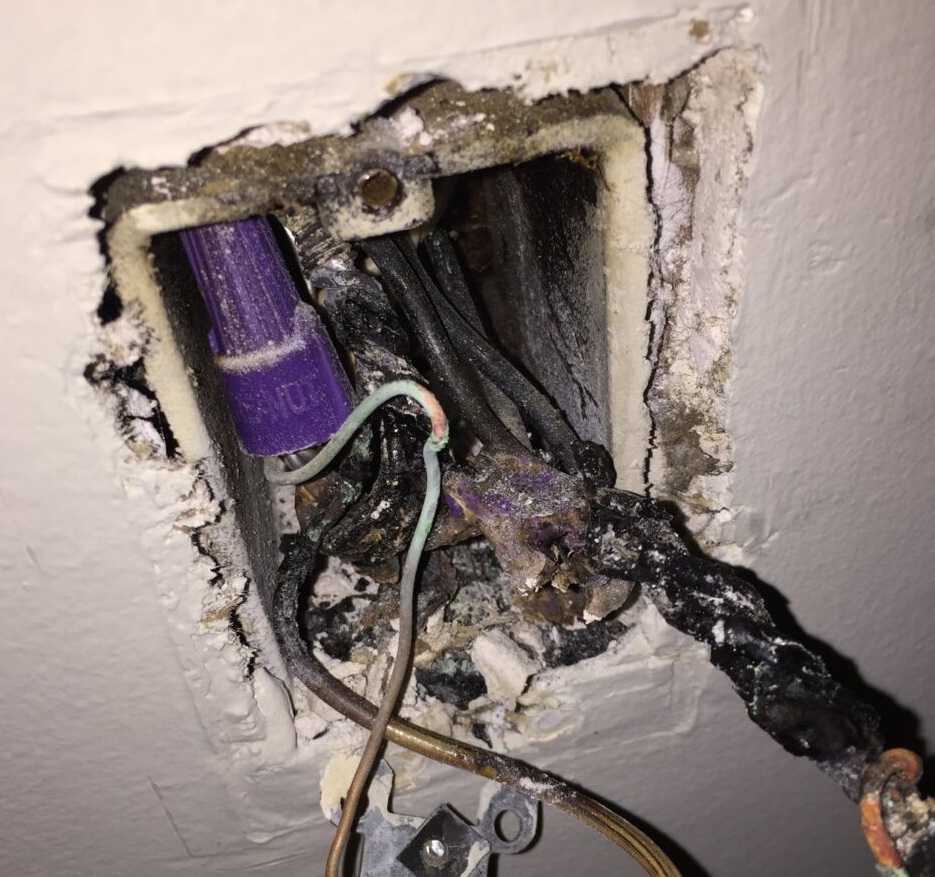Older homes carry a charm and character that modern homes often lack, but they also come with their own set of challenges. One of the most pressing concerns for homeowners of older properties is electrical safety.
Electrical systems in older homes can pose serious hazards if not properly maintained or updated. In this blog post, we’ll explore common electrical hazards in older homes, how to identify them, and what steps you can take to ensure your home is safe.

Common Issues with Aging Electrical Systems
Many older homes still rely on wiring systems that were installed decades ago, such as knob-and-tube wiring or aluminum wiring. These systems no longer fulfill modern electrical demands.
Over time, insulation degradation on older wires and loose connections, can lead to an increased risk of electrical fires. Signs of outdated wiring could be discolored outlets or switches, or a burning smell near outlets.
Loose outlets that move when plugs are inserted or removed, and sparking or crackling sounds when using switches or outlets can indicate wear and tear.
Overloaded Circuits:
Older homes often face electrical challenges due to outdated systems not designed for modern demands. Overloaded circuits occur when too many devices are plugged into a single circuit, leading to overheating and fire risks. Insufficient electrical capacity, which is common in homes with 60-100 amp service, further limits the ability to support today’s technology-heavy lifestyle.
Flickering lights, warm or hot outlet covers, frequently tripped breakers or blown fuses, and reduced efficiency of appliances are common signs of overloaded circuits and less electrical capacity.
Faulty or Outdated Circuit Breakers
The circuit breaker is the heart of your home’s electrical system. In older homes, outdated or malfunctioning breakers may fail to trip when they should, increasing the risk of electrical fires.
Common problems that can occur with old breakers are difficulty with resetting the breaker, breakers that won’t stay in the “on” position, and burn marks around the panel.

Circuit Breaker Repair
Tips for Ensuring Electrical Safety in Older Homes
To keep your home safe, consider these essential tips:
- Hire a licensed electrician to inspect your home’s electrical system. They can identify potential hazards and recommend upgrades.
- If your home still has outdated wiring or insufficient capacity, an upgrade can improve safety and functionality.
- Add GFCI and AFCI protection where needed and ensure all outlets are properly grounded.
- Distribute devices across multiple circuits and unplug unused electronics.
- Replace damaged outlets, switches, and fixtures promptly, and keep an eye out for signs of wear and tear.
While older homes offer unique charm and character, they often come with outdated electrical systems that can pose significant risks. Understanding the common electrical hazards in older homes is the first step toward addressing them. By identifying potential issues, performing regular maintenance, and upgrading outdated components, you can enjoy the beauty of your vintage home while ensuring it’s safe for you and your family.
If you’re in Odenton, Maryland, and unsure about your home’s electrical system, call us today at (443) 232-9122 or email us at info@wirefoxelectric.com.
